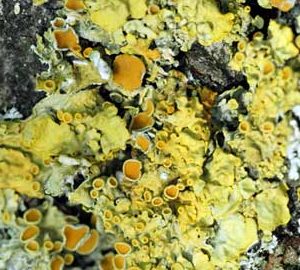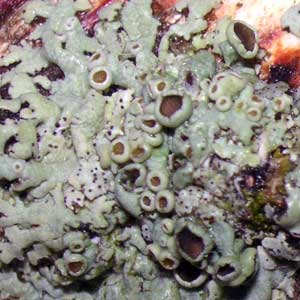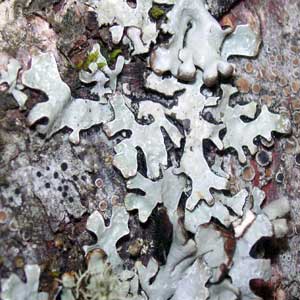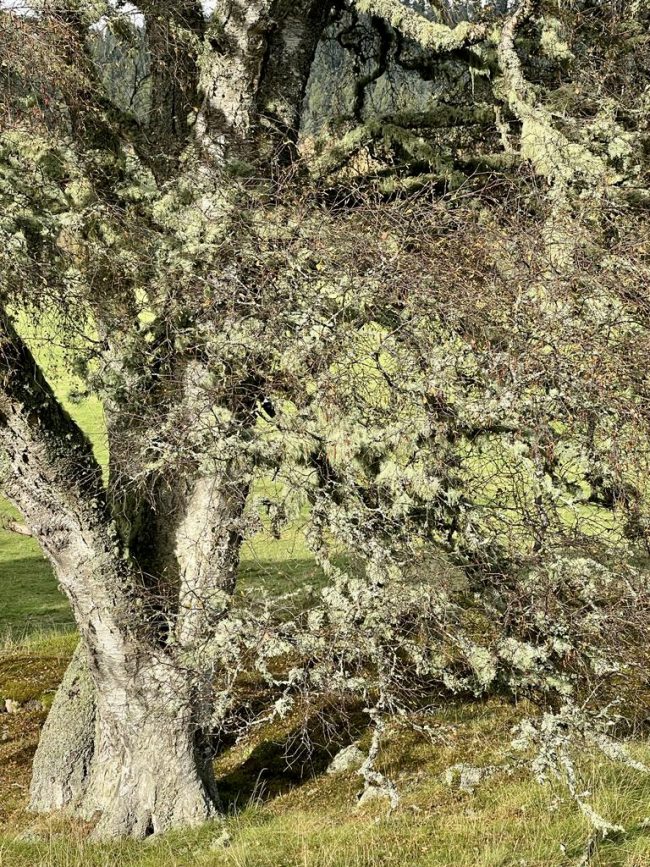Introducing woodlandsTV videos on LICHENS

In winter, woods can seem a bit ‘naked’ and empty. Trees and shrubs have entered into a dormant state in order to survive the rigours of the winter months. Their buds await the signals that herald Spring. Many birds will have migrated to warmer climes, some animals will be hibernating. Many insects will be spending the winter as eggs or pupae, whilst herbaceous plants will over-winter as seeds, corms or bulbs.
But on the bark of many trees and on the surfaces of fences and walls, there will be lichens – they are there in summer, winter, spring and autumn. Lichens are rather unusual in that they are an amalgam of two (or occasionally three) organisms : a fungus and algae. They are symbiotic systems, where two partners work together for mutual benefit (occasionally there are more than two partners). The fungus makes up the bulk of the lichen’s structure (known as the thallus), but the algae (green algae or cyanobacteria) are essential as they can photosynthesise and provide the organism with carbohydrates. The nature of the biochemistry and physiology of the lichen symbiosis is largely due to the pioneering work of Dr David Smith at the University of Oxford in the 1960's and 70's.
 Lichens come in an amazing variety of shapes, sizes and colours – there are about 30,000 species worldwide. Some grow in extreme environments such as the rocky summits of mountain ranges, growing slowly, and live for hundreds of years. Lichens can tell us much about the ‘health’ of our environment, as they are sensitive indicators of pollution. In the 1950s, 60s and 70s many lichens died due to the high level of sulphur dioxide released from domestic coal burning and industry. Nowadays, nitrogen compounds (from traffic and intensive farming) are more likely to be the problem pollutants; these too can alter the growth (of lichens).
Lichens come in an amazing variety of shapes, sizes and colours – there are about 30,000 species worldwide. Some grow in extreme environments such as the rocky summits of mountain ranges, growing slowly, and live for hundreds of years. Lichens can tell us much about the ‘health’ of our environment, as they are sensitive indicators of pollution. In the 1950s, 60s and 70s many lichens died due to the high level of sulphur dioxide released from domestic coal burning and industry. Nowadays, nitrogen compounds (from traffic and intensive farming) are more likely to be the problem pollutants; these too can alter the growth (of lichens).
Many lichens are found on trees in woodland or on isolated trees in hedgerows. They are found not only on the trunks, but some colonise branches and twigs in the canopy; they are described as corticolous. They are not parasitic on trees as they make their own food, but ‘use’ the tree as a habitat or place to grow (i.e. they are epiphytes).
 There is an excellent guide to the identification of lichens found on twigs at the Natural History Museum website and the Field Studies Council publish an informative and helpful fold out chart on “lichens on twigs’ and also run courses on lichens (in conjunction with the British Lichen Society.)
There is an excellent guide to the identification of lichens found on twigs at the Natural History Museum website and the Field Studies Council publish an informative and helpful fold out chart on “lichens on twigs’ and also run courses on lichens (in conjunction with the British Lichen Society.)
Further information on the biology of lichens can be found at these sites :
http://www.bna-naturalists.org/mags/aut-wintr03/lichens.html
http://www.ucmp.berkeley.edu/fungi/lichens/lichens.html
http://www.backyardnature.net/lichens.htm
Woodlands TV has produced two short videos on the biology of lichens :-

Lichen covered tree
Comments are closed for this post.
